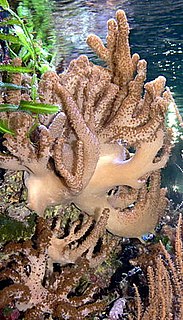
Alcyonacea, or soft corals, are an order of corals. In addition to the fleshy soft corals, the order Alcyonacea now contains all species previously known as "gorgonian corals", that produce a more or less hard skeleton, though quite different from "true" corals (Scleractinia). These can be found in suborders Holaxonia, Scleraxonia, and Stolonifera. They are sessile colonial cnidarians that are found throughout the oceans of the world, especially in the deep sea, polar waters, tropics and subtropics. Common names for subsets of this order are sea fans and sea whips; others are similar to the sea pens of related order Pennatulacea. Individual tiny polyps form colonies that are normally erect, flattened, branching, and reminiscent of a fan. Others may be whiplike, bushy, or even encrusting. A colony can be several feet high and across, but only a few inches thick. They may be brightly coloured, often purple, red, or yellow. Photosynthetic gorgonians can be successfully kept in captive aquaria.

Acanella is a genus of deep-sea bamboo coral of the family Isididae, containing the following species: Acanella are mainly studied and found in Hawaii, they are able to survive in high-flow sites and are preyed upon by nudibranch mollusks. It has a high fecundity and small size that allows high dispersal and recruitment; however, it has been classified as a vulnerable marine organism due to its vulnerability to bottom fishing gear.

Lepidisis is a genus of deep-sea bamboo coral in the family Isididae. It contains the following species:

Keratoisis is a genus of deep-sea bamboo coral in the family Isididae, containing the following species:
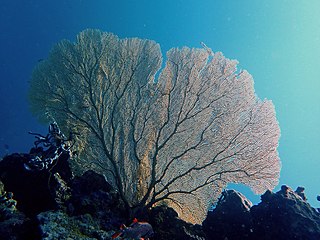
Scleraxonia is a suborder of corals, a member of the phylum Cnidaria.
Parisis is a genus of corals in the monotypic family Parisididae.
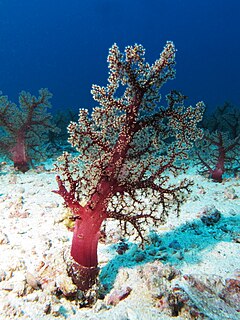
Dendronephthya is a genus of soft corals in the family Nephtheidae. There are over 250 described species in this genus. They are sometimes kept in aquariums, but are notoriously difficult to keep, requiring a near constant supply of small foods such as phytoplankton.
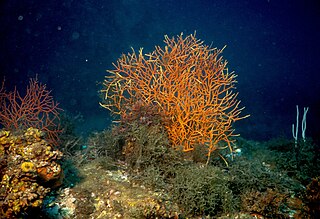
Leptogorgia is a genus of soft coral in the family Gorgoniidae. The genus has a widespread distribution with members being found in the eastern Atlantic Ocean from Western Europe to South Africa, the Mediterranean Sea, the Atlantic coasts of North and South America, the Antilles and the Pacific coast of America. Species are found in both shallow and deep waters.

Alcyonium is a genus of soft corals in the family Alcyoniidae.

Plexauridae is a family of marine colonial octocorals in the phylum Cnidaria. Members of this family are found in shallow tropical and subtropical seas. Many species contain symbiotic photosynthetic protists called zooxanthellae.

Siphonogorgia is a genus of soft corals in the family Nidaliidae. Like other members of this family, these corals do not contain symbiotic zooxanthellae.
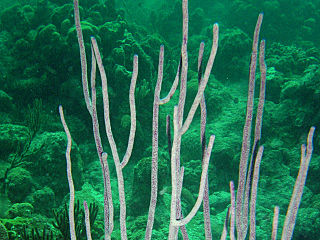
Ellisella, commonly known as sea whip, is a genus of soft coral in the family Ellisellidae.

Swiftia is a genus of gorgonian-type octocorals in the family Plexauridae.

Clavularia is a genus of corals in the family Clavulariidae. They are often referred by the common names star polyps or clove polyps.

Litophyton is a genus of soft corals in the family Nephtheidae.
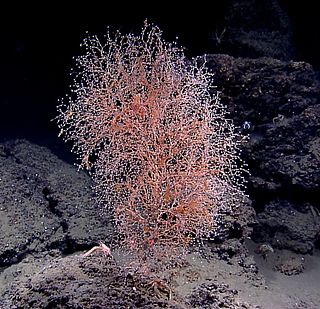
Chrysogorgia is a genus of soft corals in the family Chrysogorgiidae.

Callogorgia is a genus of soft corals in the family Primnoidae.
Villagorgia is a genus of gorgonian-type octocorals in the family Plexauridae.

Anthogorgia is a genus of corals belonging to the family Acanthogorgiidae.


















